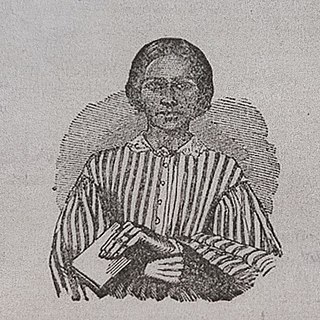
The Sauk or Sac are Native Americans and Indigenous peoples of the Northeastern Woodlands. Their historical territory was near Green Bay, Wisconsin. Today they have three tribes based in Iowa, Kansas, Nebraska, and Oklahoma. Their federally recognized tribes are:

Doniphan County is the most northeastern county in the U.S. state of Kansas. Its county seat is Troy, and its most populous city is Wathena. As of the 2020 census, the county population was 7,510. The county was named after Alexander Doniphan, a Mexican–American War hero. It is bounded on the east by the Missouri river, south by Atchison county, and west by Brown county.

Strong City is a city in Chase County, Kansas, United States. Originally known as Cottonwood Station, in 1881 it was renamed Strong City after William Barstow Strong, then vice-president and general manager, and later president of the Atchison, Topeka and Santa Fe Railway. As of the 2020 census, the population of the city was 386. It is located along U.S. Route 50 highway.

Highland is a city in Doniphan County, Kansas, United States. As of the 2020 census, the population of the city was 903. It is home to Highland Community College.

The Iowa, also known as Ioway, and the Bah-Kho-Je or Báxoje, are a Native American Siouan people. Today, they are enrolled in either of two federally recognized tribes, the Iowa Tribe of Oklahoma and the Iowa Tribe of Kansas and Nebraska.

The Platte Purchase was a land acquisition in 1836 by the United States government from American Indian tribes of the region. It comprised lands along the east bank of the Missouri River and added 3,149 square miles (8,156 km2) to the northwest corner of the state of Missouri.

The Sac and Fox Nation is the largest of three federally recognized tribes of Sauk and Meskwaki (Fox) Indian peoples. Originally from the Lake Huron and Lake Michigan area, they were forcibly relocated to Oklahoma in the 1870s and are predominantly Sauk. The Sac and Fox Oklahoma Tribal Statistical Area (OTSA) is the land base in Oklahoma governed by the tribe.

The Otoe are a Native American people of the Midwestern United States. The Otoe language, Chiwere, is part of the Siouan family and closely related to that of the related Iowa, Missouria, and Ho-Chunk tribes.

The Iowa Tribe of Kansas and Nebraska is one of two federally recognized tribes of Iowa people. The other is the Iowa Tribe of Oklahoma.

The Meskwaki, also known by the European exonyms Fox Indians or the Fox, are a Native American people. They have been closely linked to the Sauk people of the same language family. In the Meskwaki language, the Meskwaki call themselves Meshkwahkihaki, which means "the Red-Earths", related to their creation story.

Native American tribes in the U.S. state of Nebraska have been Plains Indians, descendants of succeeding cultures of indigenous peoples who have occupied the area for thousands of years. More than 15 historic tribes have been identified as having lived in, hunted in, or otherwise occupied territory within the current state boundaries.
Ocooch Mountains are a place name for the Western Upland area of Wisconsin also known as the Driftless Region, meaning un-glaciated, lacking glacial drift or the Paleozoic Plateau, referring to a geologic era, Greek for "ancient life". The lack of glaciated terrain accounts for high hills, bluffs, and ridges. The Chippewa, Black, La Crosse, Kickapoo, Baraboo, Lemonweir, Pine, Wisconsin, Grant, Platte and Pecatonia rivers and their tributaries create deeply eroded valleys that contrast the nearby peaks. One dramatic example is Wildcat Mountain State Park. The Baraboo Range anchors the eastern edge where the Wisconsin River turns and runs through the area to the Mississippi River. The Baraboo Range is a monadnock in Sauk and Columbia Counties and a National Natural Landmark formed 1.6 billion years ago featuring Devil's Lake, an endorheic lake.

The Kansas Historical Society is the official state historical society of Kansas.

The Sac and Fox Nation of Missouri in Kansas and Nebraska is one of three federally recognized Native American tribes of Sac and Meskwaki (Fox) peoples. Their name for themselves is Nemahahaki and they are an Algonquian people and Eastern Woodland culture.
Highland Community College (HCC) is a public community college in Highland, Kansas.

Chief Wapello's Memorial Park, also known as Chief Wapello's Gravesite and the Site of Sac and Fox Indian Agency, is a historic site located near Agency, Iowa, United States. The property was listed on the National Register of Historic Places in 1975. The park is on the site of the Indian Agency that became the home of the Sauk and Meskwaki (Fox) tribes. They were relocated here by the United States government after the Black Hawk War of 1832. General Joseph M. Street was appointed the Indian Agent and settled with his family on the agency. He earned the respect of the Meskwaki chief Wapello. A stone marker marks the site of the Agency House. Another stone marker commemorates the 1842 negotiations for the tribes to hand over their Iowa lands to the United States government, and the first Christian services that were held in Iowa's interior by the Reverend Thomas Kirkpatrick, a Methodist Circuit Rider, in 1838. The tribes were relocated from here to Kansas.

Irvin Hall was the first permanent building at Highland University in Highland, Kansas. It is the oldest building in Kansas still used for higher education.
James White Cloud was Chief of the Iowa people from 1865 until his death in 1940.
The Ioway Tribal National Park is a tribal national park established by the Iowa Tribe of Kansas and Nebraska. The 444-acre park is located entirely within the Ioway Reservation, next to the Missouri River southeast of Rulo on the border between Kansas and Nebraska. The Park was created in 2020 and is set to open to the public in 2025.

Sophie Rubeti was a young girl whose bequest built the Rubeti Lodge, a home for Indian girls in Highland, Kansas.


















